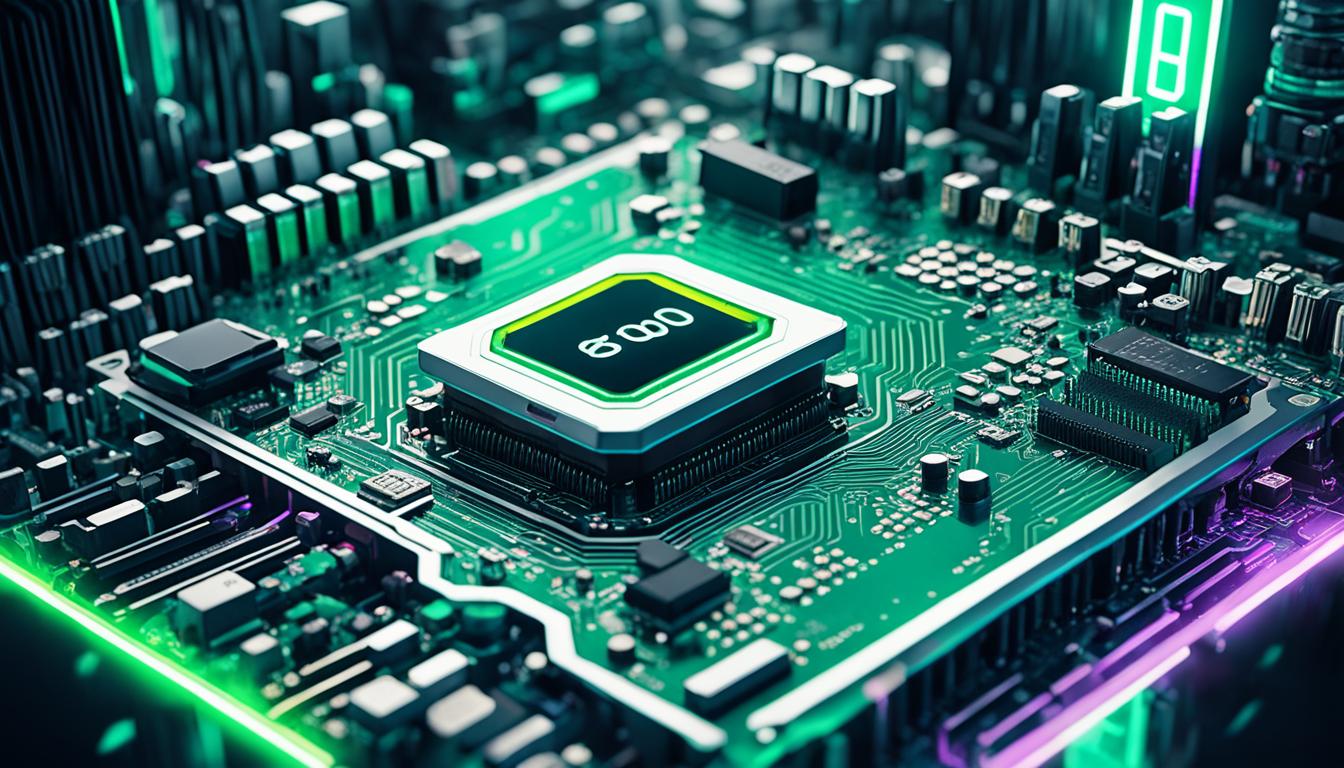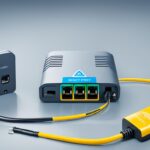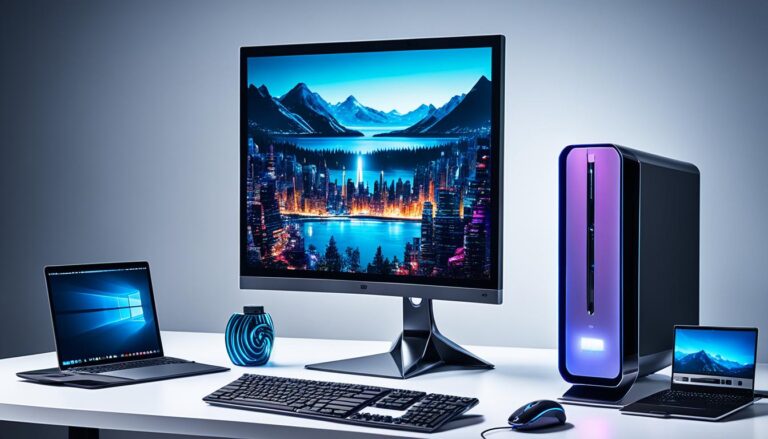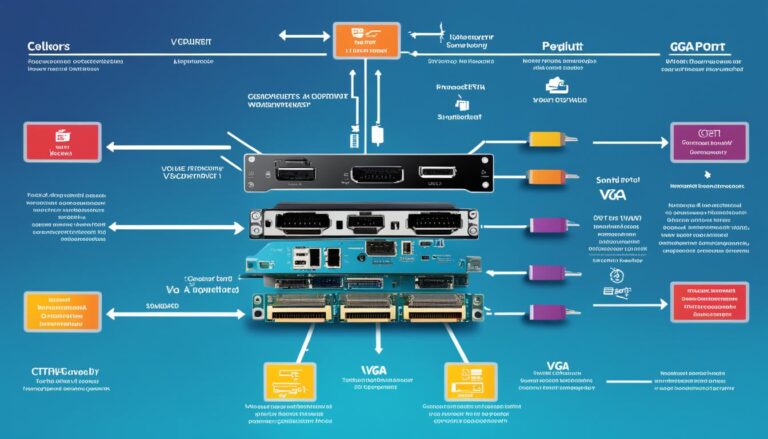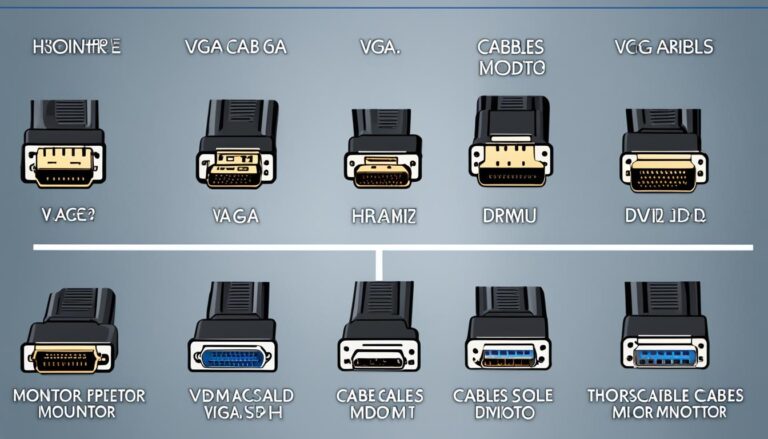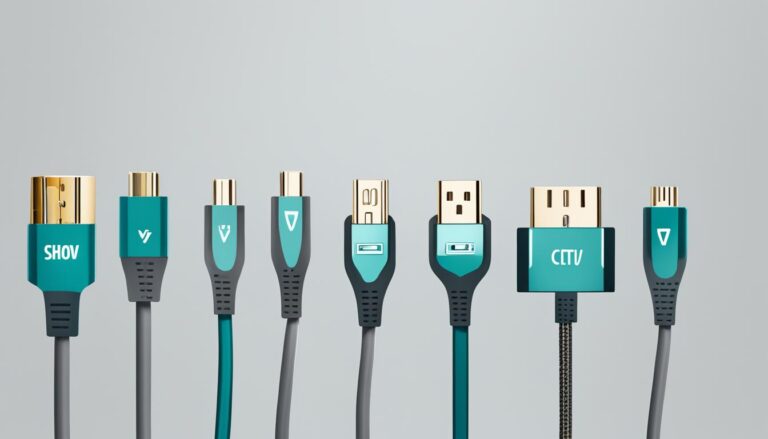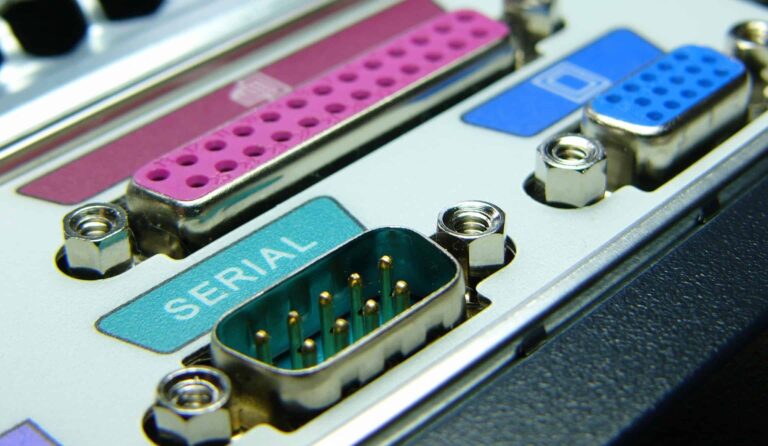In computer science, the logical port of a computer is key for connections and service identification in TCP/IP and UDP. Have you wondered why it’s always port 8000?
A logical port is a number for a “logical” connection. It marks the end of a connection, showing a service in TCP/IP and UDP. These ports help TCP/IP know where to send data.
There are 65,536 TCP and UDP ports, numbered 0 to 65,535. The Internet Assigned Number Authority (IANA) keeps a list of these ports. Port 8000 is known as a well-known port.
Knowing about your computer’s logical ports is vital for network security. We will explore more on logical ports, their importance, and security next.
Understanding Logical Ports
In the world of computer science, we find two main types of ports: physical and logical. Physical ports are the plugs you see on devices, like RJ-45 jacks. Logical ports, however, are a bit different. They’re given numbers and stand for connections.
Logical ports are key to computer networks working right. They help protocols like TCP/IP and UDP figure out where to send data. These protocols have 65,536 ports, from 0 to 65,535. This wide range ensures each service gets a unique number. This way, data finds its way to the right place.
Take TCP port 80, for instance. It’s used for visiting regular websites via HTTP. TCP port 443, though, is all about safety. It’s for HTTPS, protecting data on sites like online shops or private services.
Why Logical Ports Matter
Logical ports help pinpoint services in a network. They give every service a special number. This lets TCP/IP and UDP send data straight to where it needs to go. It’s how different tech talks and shares info.
“Logical ports are vital for today’s computer networks. They connect tech, let us use online services, and keep data safe. Without them, our internet and networks wouldn’t work as well.”
They’re also crucial for keeping networks safe. Network bosses can choose which ports to open or close. This way, they control who gets in and out. Firewalls help too, by checking data and following rules to stop bad access. This keeps the network safe and sound.
Summary
Getting how logical ports work is a must for network folks. They’re part of the network’s core, along with physical ports. They let tech connect and talk, thanks to TCP/IP and UDP. With smart management, these ports keep networks running smoothly and safely.
Port Ranges and Assignments
The Internet Assigned Number Authority (IANA) plays a big role in managing logical ports. It has divided these ports into three types: well-known ports, registered ports, and dynamic/private ports. This system helps organize the port assignments.
Well-Known Ports
Well-known ports are numbered from 0 to 1023. They are for common protocols and services. These ports are fixed and well-recorded. They are also tested in Network+ or Security+ exams. Understanding them is important for IT professionals. For instance:
- TCP port 80 for HTTP (Hypertext Transfer Protocol)
- UDP port 53 for DNS (Domain Name System)
- TCP port 443 for HTTPS (Hypertext Transfer Protocol Secure)
- UDP port 123 for NTP (Network Time Protocol)
Registered Ports
Registered ports go from 1024 to 49,151. IT companies use these for their own applications. This range gives more options for custom applications and services. They’re not as widely known as well-known ports. A known example is Microsoft SQL Server, which uses TCP port 1433.
Dynamic/Private Ports
Dynamic/private ports span from 49,152 to 65,535. They’re open for any application to use. These ports are usually client ports for web server connections. Because they’re dynamically allocated, they allow many clients to connect at once. This makes network traffic management more flexible.
It’s crucial for network administrators and IT professionals to know about these port ranges. This knowledge aids in network security, spotting vulnerabilities, and smooth communication between services and applications.
| Port Range | Usage |
|---|---|
| 0 – 1023 | Well-Known Ports |
| 1024 – 49,151 | Registered Ports |
| 49,152 – 65,535 | Dynamic/Private Ports |
Logical Port Security
Protecting your computer’s logical ports is vital for keeping your network safe. Hackers use tools like port scanning to find open ports on servers. Knowing which ports are open helps them attack by finding system vulnerabilities.
Network and security admins should make it a priority to close unnecessary ports. This reduces the chance of attacks. An excellent method is to use a firewall. It acts like a shield, controlling network traffic and limiting access to certain ports. Firewalls are the first defense line, allowing only safe traffic, which helps stop unauthorized access and security issues.
“Effective logical port security is essential in safeguarding sensitive data and preventing unauthorized access to critical systems.”
It’s crucial for organizations to regularly check their ports and systems for weaknesses. By looking for open ports and security holes, admins can fix problems early. Keeping systems updated and patched is also key to staying secure against known threats.
Not all open ports are a security risk. Some are needed for important network functions. But it’s important to check each open port. This ensures that only necessary ports are open and reduces security risks.
Taking a thorough approach to logical port security helps organizations improve their safety. Regularly updating security practices is important. This makes it harder for attackers to use open ports to cause harm.
Benefits of Implementing Logical Port Security:
- Reduced risk of unauthorized access
- Protection against port scanning and vulnerability scanning
- Minimized attack surface and vector
- Enhanced network security
- Improved data confidentiality and integrity
- Compliance with security standards and regulations
Best Practices for Logical Port Security:
- Regularly scan for open ports and vulnerabilities
- Closely monitor network traffic and logs
- Implement strong firewalls and access control policies
- Close unnecessary ports and services
- Update and patch systems regularly
- Implement intrusion detection and prevention systems
- Educate employees about the importance of logical port security
- Conduct periodic security audits and assessments
By following these guidelines and staying proactive, organizations can boost their defenses. This protects them from cyber threats. Keeping a keen eye on logical port security is vital for safeguarding critical assets.
Conclusion
In computer networking, logical ports are key for setting up connections and spotting services in TCP/IP and UDP. They act as the main link between devices and the internet. Every computer gets a logical port number, like 8000, making it unique in the network.
Knowing about different port ranges is vital for good network management and safety. These ranges include well-known ports, registered ports, and dynamic/private ports. System admins can reduce risks by closing ports that are not needed. They can also use firewalls to add a shield. Firewalls help by checking network traffic and letting only approved ports open.
Keeping logical ports safe is very important to keep computer networks secure and private. By protecting these ports, computer systems can fight off threats from port scanning and harmful attacks. Therefore, companies must make logical port security a top priority in their network safety plans.
FAQ
Why is the logical port of my computer always assigned the number 8000?
The logical port number 8000 is chosen because the Internet Assigned Number Authority (IANA) sets it. This number is for well-known ports used for specific services.
What are logical ports and how do they relate to physical ports?
Logical ports are numbers that show connections in computer networks. They help identify services in TCP/IP and UDP. Physical ports are the actual connectors you see on devices.
How many logical ports are there and what range do they fall under?
There are 65,536 logical ports for TCP/IP and UDP, numbered from 0 to 65,535. These allow TCP/IP to send traffic to the right services.
What are the different ranges of logical ports?
Logical ports are split into three types: well-known, registered, and dynamic/private. Well-known ports are from 0 to 1023 for common services. Registered ports go from 1024 to 49,151 for certain applications. Dynamic/private ports are from 49,152 to 65,535 and open for any use.
Why is logical port security important and how can it be ensured?
Keeping logical ports safe is key to stop hackers. Hackers look for open ports to find weak spots. To stay safe, close ports you don’t need, use firewalls, and watch port activities.
How can I safeguard my computer’s logical ports?
Protecting your computer’s ports means being on top of security. Make sure to shut ports not in use, set up firewalls, and keep an eye out for strange activities.
